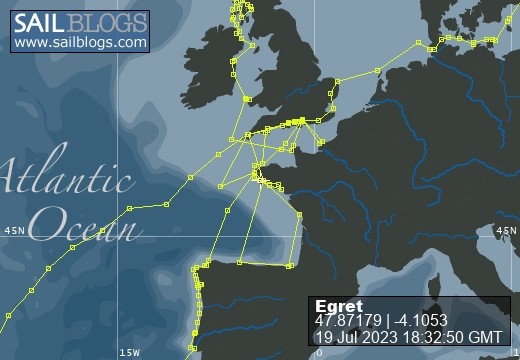
Egret
09 August 2022 | Picture: The Sunk Inner Light Vessel in the Thames Estuary
03 August 2022 | Egret at the Royal Norfolk and Suffolk Yacht Club, Lowestoft
23 July 2022 | Picture: One of the smaller locks at Holtenau
20 July 2022 | Picture: Patrick reminiscing with Juergen at Rostock
11 July 2022 | Picture: Egret at Stralsund, with the barque Gorch Fock beyond
04 July 2022 | Picture: Amanda on Bornholm
01 July 2022 | Picture: Kristianopol, with Egret at far right
26 June 2022 | Ernemar
19 September 2020 | Picture: Egret being lifted out at Ernemar, Sweden
08 September 2020 | Chart: our route from Mem into the Tjust Archipelago
01 September 2020 | Picture: the Carl Johans flight of seven locks
29 August 2020 | Picture: Egret (by G. Einefors)
27 August 2020 | Picture: Egret at Vadstena Castle
25 August 2020 | Picture: Norrkvarn Lock
23 August 2020 | Picture: Egret crossing Lake Vänern
19 August 2020 | Picture: Inside the lowest Trollhatte lock
17 August 2020 | Picture: The Gota Alv Bron in Gothenburg
16 August 2020 | Picture: the GKSS, Langedrag
13 August 2020 | Picture: Egret alongside (left) at Fisketangen
10 August 2019
128. Out of Africa
02 April 2015
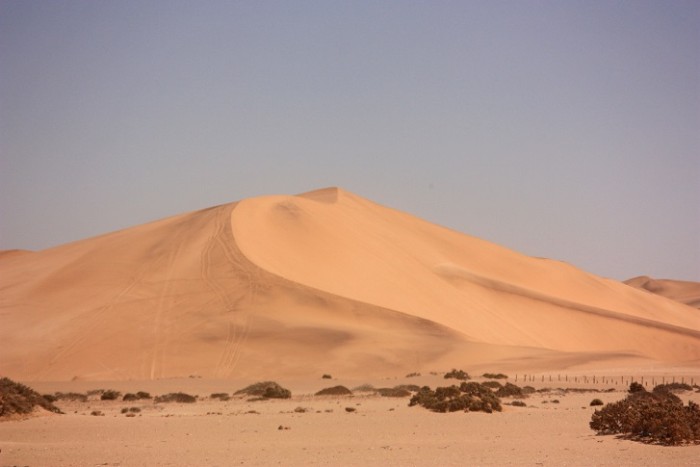
The bed of the Omaruru River runs through a shallow gorge out to the ocean at Henties Bay. Although the river is normally dry, a fresh-water spring enabled a small town to develop which now claims to be the angling mecca of southern Africa. It is perched precariously at the edge of the Namib desert overlooking a steep, natural embankment of orange sand which merges into the contrasting silver grains of the beach some 20m below. The Skeleton Coast officially begins a little further to the north, but the whole region is dangerous for shipping, the wreck of an Angolan fishing boat on the beach just south of the town being a recent example. Apparently the engines failed, but fortunately all the crew were saved. Further down the coast is Swakopmund, which was founded in 1892 to become the main harbour for German South-West Africa. The small mole must have provided minimal shelter for ships, but now, at least, it protects hardy swimmers from the waves; and the 'Old Iron Jetty' has been restored for use as a seaside pier. The town has many distinctive German colonial buildings such as das Woermanhaus, built for a trading company. It is said to be much loved by Namibians looking to escape the heat of the interior, and a high proportion of residents and visitors are still German speaking.
After five days touring we returned to Walvis Bay, where we had left "Egret" on a mooring buoy. It is an excellent harbour thanks to the natural protection provided by a six mile long sand-spit. It was first colonised by the British and has since become one of the largest ports on the west coast of Africa. Wharves already extend for about 4,000m, and a Chinese contractor is constructing a new one right beside the yacht anchorage. Stacks of containers and a forest of cranes dominate the skyline, and bulk cargoes include the import of coal and the export of salt. A prosperous town has developed between the port and the desert, built on a simple grid layout with extravagantly wide streets. There are a few early 20th century buildings of character in the centre, but the majority are fairly non-descript designs from the 1950s onwards. House building on the outskirts is booming, and some of the most recent ones are surprisingly ostentatious examples of contemporary architecture. On days when a cruise ship is in port, the town is besieged by tourists who attract touts and taxi drivers from all around. Otherwise the place is very much a working metropolis that we could walk around at will and be totally ignored.
Walvis Bay Yacht Club is kept busy by working expatriates during lunch hours and early evenings, and by families at weekends. Temporary membership allowed us to land our tender and use the showers, bar and dining room. There were sometimes a few dinghies out sailing, and one blustery day I used our inflatable to help rescue a capsized Fireball. The downside of the anchorage is that it can get extremely choppy when the wind gets up in the afternoons, making for a wet dinghy ride back from the shore. When on board, watching the progress of the civil engineering works next to us provided an interesting diversion. We enjoyed the company of five other yacht crews, with an unusual preponderance of Canadians who organised a St. Patrick's Day braai ashore. 'Dune 7', which is 130m high, is a top local attraction. With Travis and Joanne, we walked up the gentle slope at one end, along the ridge, and ran down the steepest part, our legs plunging into the soft sand which was so hot that it scorched the soles of our feet. We also visited the extensive area of salt pans beside the lagoon. Conveyor belts deposit great cones of salt which is transferred into open trucks for delivery to the port. The pans appear to be pink from the algae in the shallow water beneath the crust, and in certain conditions this colour is reflected into the atmosphere above, when viewed from afar.
With our provisions, fuel and water replenished, it was time to set off on our first long, offshore leg up the Atlantic. We were glad that we had taken the time to visit Nambia, a country that we had known little about and which hadn't been on our original itinerary. The geography and natural history are spectacular; the political situation appears to be stable, the economy in good health and the streets safe for visitors. We experienced little sign of racial tension, and the indigenous population seems to have more self confidence than their counterparts in South Africa. We hauled the anchor up, pulling off dozens of little starfish clinging to the chain, and motored up Walvis Bay towards Pelican Point. The visibility was unusually good, so for the first time we could see the sand-dunes at the edge of the desert and mountains beyond. After rounding the north cardinal buoy off the Point, we set a course of 290º true towards St. Helena.
The wind strength was up and down for the first five days, so we were forever putting reefs in the mainsail or letting them out, and exchanging the genoa for the staysail and back again. We soon left the cold air behind, but without much moon initially the nights were very dark. The waves on day 5 seemed bigger than might be expected, having been generated from a storm down south, and one freak wave drenched the cockpit. Our first flying fish of the season landed on deck that night, along with the inevitable squid, but intentional fishing was unsuccessful. We pulled a tuna right up to the stern but it escaped as we tried to land it, then next day we lost a new lure when the wire trace broke from the tug of a big, unseen fish. By day six, the wind looked settled enough from astern to take down the mainsail and set up the twin poled-out headsails. We managed to keep these up until we crossed the Greenwich Meridian three days later. A sudden but prolonged squall up to 25 knots hit us after dark on day 9, but by dawn, the wind had died completely so we had to start the engine. The wind filled in at about 12 to 15 knots during the next night, but at daybreak we could still see rain clouds all around us, which we tracked and tried to dodge in case of squalls. When they came near, the wind shifted dramatically by up to 40º, which, as we were restricted on sailing angle by our twin pole set up, took us way off course. In the end we stowed the poles and continued under a single headsail, changing from genoa to staysail whenever an approaching squall became unavoidable.
Early on day 12 we saw a different kind of cloud ahead: wide and flat topped, which we presumed to be lying over St. Helena. Sure enough, by early afternoon we could make out the profile of the island as it emerged between the horizon and the cloud, at a distance of 45 miles. The rain clouds vanished, bringing blue skies all around us. As an extra bonus we caught a small dorado, which we saved for a celebration supper the next day. When still 36 miles away, we were surprised by the voice of a lady with a very posh English accent talking to another vessel over the vhf, announcing herself as "St. Helena Radio". We called her up and reported our approach, and she asked us to call Port Control when a mile away from the moorings. We don't normally like approaching a strange port in the dark, but as the island is steep to all around and there was a brilliant full moon, we reckoned it would be worth a try. We were surprised to get a reply from the harbourmaster at 2300 local time, and he instructed us to pick up any available yellow mooring buoy. Holga, of the German yacht "Freya", then called us with some encouraging advice. We soon identified other yachts at their moorings in front of the high cliffs, and made fast to a vacant buoy at half an hour after midnight, having clocked up 1,270 miles on the log. We turned in for a very peaceful sleep for the rest of the night.
After five days touring we returned to Walvis Bay, where we had left "Egret" on a mooring buoy. It is an excellent harbour thanks to the natural protection provided by a six mile long sand-spit. It was first colonised by the British and has since become one of the largest ports on the west coast of Africa. Wharves already extend for about 4,000m, and a Chinese contractor is constructing a new one right beside the yacht anchorage. Stacks of containers and a forest of cranes dominate the skyline, and bulk cargoes include the import of coal and the export of salt. A prosperous town has developed between the port and the desert, built on a simple grid layout with extravagantly wide streets. There are a few early 20th century buildings of character in the centre, but the majority are fairly non-descript designs from the 1950s onwards. House building on the outskirts is booming, and some of the most recent ones are surprisingly ostentatious examples of contemporary architecture. On days when a cruise ship is in port, the town is besieged by tourists who attract touts and taxi drivers from all around. Otherwise the place is very much a working metropolis that we could walk around at will and be totally ignored.
Walvis Bay Yacht Club is kept busy by working expatriates during lunch hours and early evenings, and by families at weekends. Temporary membership allowed us to land our tender and use the showers, bar and dining room. There were sometimes a few dinghies out sailing, and one blustery day I used our inflatable to help rescue a capsized Fireball. The downside of the anchorage is that it can get extremely choppy when the wind gets up in the afternoons, making for a wet dinghy ride back from the shore. When on board, watching the progress of the civil engineering works next to us provided an interesting diversion. We enjoyed the company of five other yacht crews, with an unusual preponderance of Canadians who organised a St. Patrick's Day braai ashore. 'Dune 7', which is 130m high, is a top local attraction. With Travis and Joanne, we walked up the gentle slope at one end, along the ridge, and ran down the steepest part, our legs plunging into the soft sand which was so hot that it scorched the soles of our feet. We also visited the extensive area of salt pans beside the lagoon. Conveyor belts deposit great cones of salt which is transferred into open trucks for delivery to the port. The pans appear to be pink from the algae in the shallow water beneath the crust, and in certain conditions this colour is reflected into the atmosphere above, when viewed from afar.
With our provisions, fuel and water replenished, it was time to set off on our first long, offshore leg up the Atlantic. We were glad that we had taken the time to visit Nambia, a country that we had known little about and which hadn't been on our original itinerary. The geography and natural history are spectacular; the political situation appears to be stable, the economy in good health and the streets safe for visitors. We experienced little sign of racial tension, and the indigenous population seems to have more self confidence than their counterparts in South Africa. We hauled the anchor up, pulling off dozens of little starfish clinging to the chain, and motored up Walvis Bay towards Pelican Point. The visibility was unusually good, so for the first time we could see the sand-dunes at the edge of the desert and mountains beyond. After rounding the north cardinal buoy off the Point, we set a course of 290º true towards St. Helena.
The wind strength was up and down for the first five days, so we were forever putting reefs in the mainsail or letting them out, and exchanging the genoa for the staysail and back again. We soon left the cold air behind, but without much moon initially the nights were very dark. The waves on day 5 seemed bigger than might be expected, having been generated from a storm down south, and one freak wave drenched the cockpit. Our first flying fish of the season landed on deck that night, along with the inevitable squid, but intentional fishing was unsuccessful. We pulled a tuna right up to the stern but it escaped as we tried to land it, then next day we lost a new lure when the wire trace broke from the tug of a big, unseen fish. By day six, the wind looked settled enough from astern to take down the mainsail and set up the twin poled-out headsails. We managed to keep these up until we crossed the Greenwich Meridian three days later. A sudden but prolonged squall up to 25 knots hit us after dark on day 9, but by dawn, the wind had died completely so we had to start the engine. The wind filled in at about 12 to 15 knots during the next night, but at daybreak we could still see rain clouds all around us, which we tracked and tried to dodge in case of squalls. When they came near, the wind shifted dramatically by up to 40º, which, as we were restricted on sailing angle by our twin pole set up, took us way off course. In the end we stowed the poles and continued under a single headsail, changing from genoa to staysail whenever an approaching squall became unavoidable.
Early on day 12 we saw a different kind of cloud ahead: wide and flat topped, which we presumed to be lying over St. Helena. Sure enough, by early afternoon we could make out the profile of the island as it emerged between the horizon and the cloud, at a distance of 45 miles. The rain clouds vanished, bringing blue skies all around us. As an extra bonus we caught a small dorado, which we saved for a celebration supper the next day. When still 36 miles away, we were surprised by the voice of a lady with a very posh English accent talking to another vessel over the vhf, announcing herself as "St. Helena Radio". We called her up and reported our approach, and she asked us to call Port Control when a mile away from the moorings. We don't normally like approaching a strange port in the dark, but as the island is steep to all around and there was a brilliant full moon, we reckoned it would be worth a try. We were surprised to get a reply from the harbourmaster at 2300 local time, and he instructed us to pick up any available yellow mooring buoy. Holga, of the German yacht "Freya", then called us with some encouraging advice. We soon identified other yachts at their moorings in front of the high cliffs, and made fast to a vacant buoy at half an hour after midnight, having clocked up 1,270 miles on the log. We turned in for a very peaceful sleep for the rest of the night.
Comments
| Vessel Name: | Egret |
| Vessel Make/Model: | Sweden Yachts 390 |
| Hailing Port: | Chichester Harbour |
| Crew: | Patrick & Amanda Marshall |
Egret's Photos - Main
R.jpg) |
The Gota River, Trollhatte Canal, Lakes Vanern & Vattern and the Gota Canal
2 Photos | 9 Sub-Albums
Created 30 September 2020
|
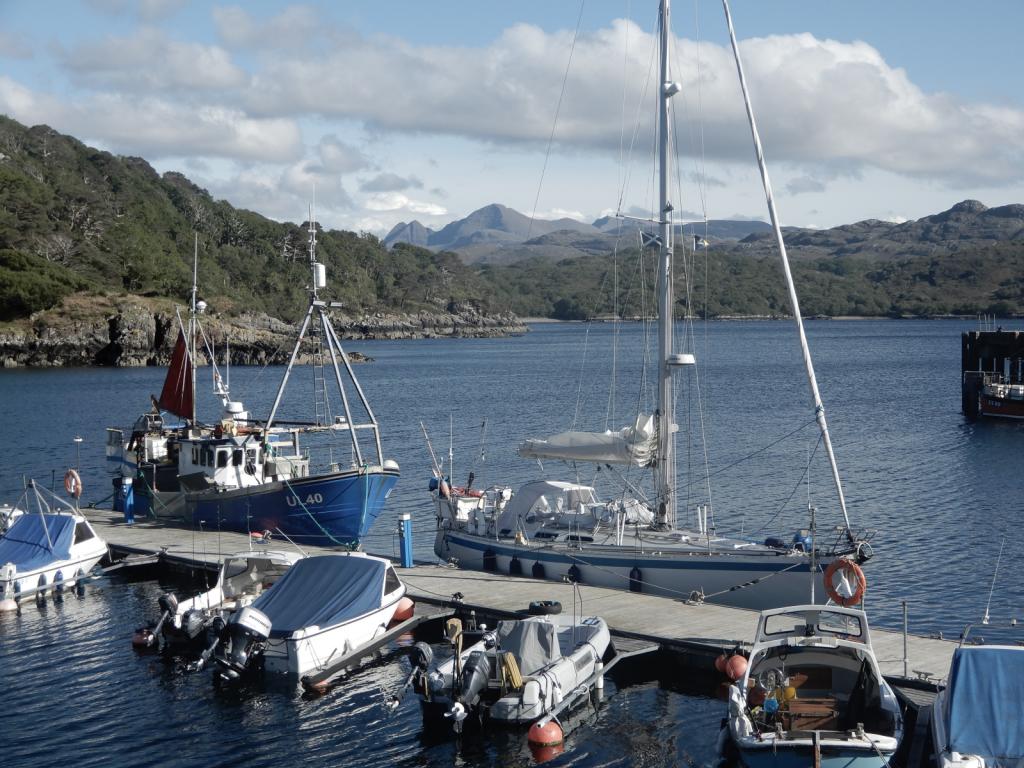 |
The Inner and Outer Hebrides, Orkney, Fair Isle, Shetland, Norway and Sweden's west coast.
1 Photo
Created 14 November 2019
|
|
Normandy, Scilly, Pembrokeshire, Ireland, Isle of Man, Northern Ireland, Inner Hebrides and the Crinan Canal.
1 Photo
Created 14 November 2018
|
Egret
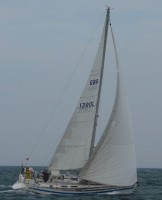
Who: Patrick & Amanda Marshall
Port: Chichester Harbour

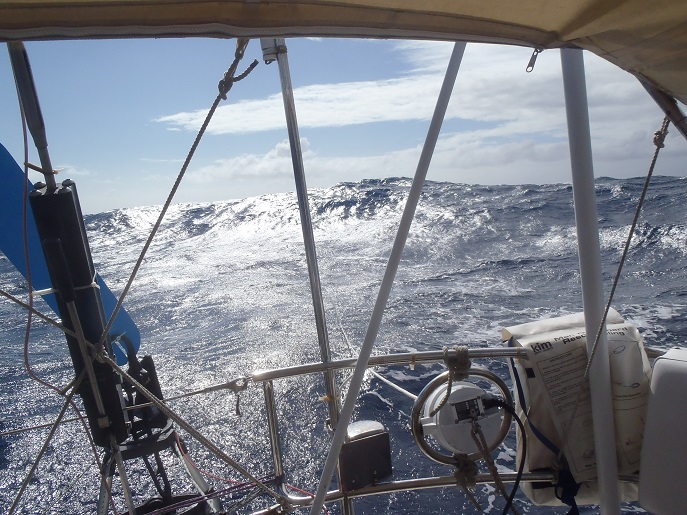
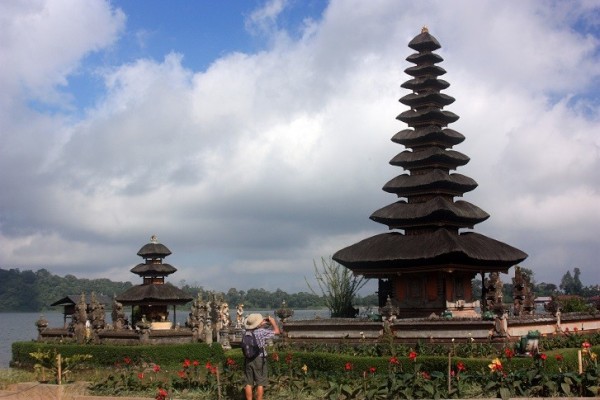
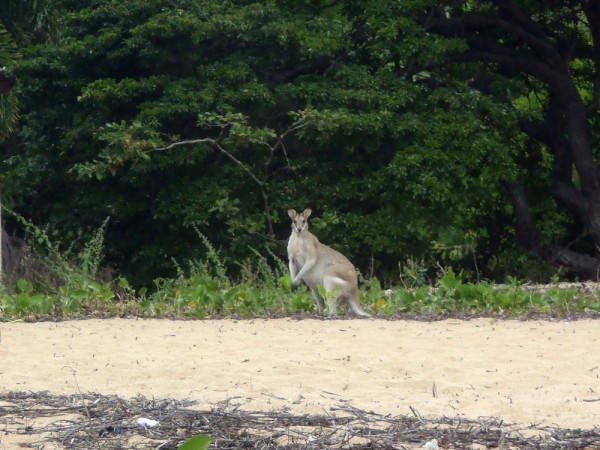
, Pentecost, Naghol (Land diving)a.jpg)
Amanda raising the Quarantine & New Zealand courtesy flagedit_edited-1 a.jpg)
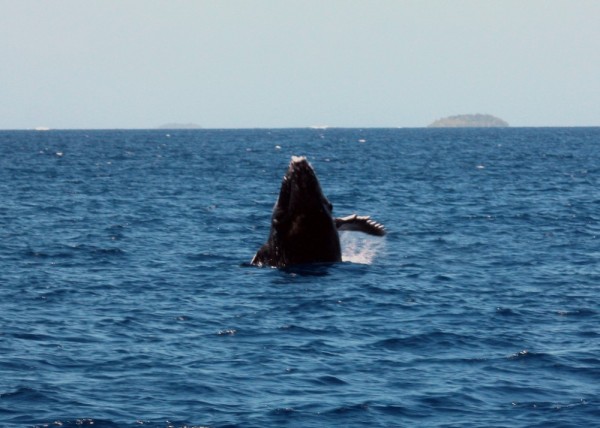
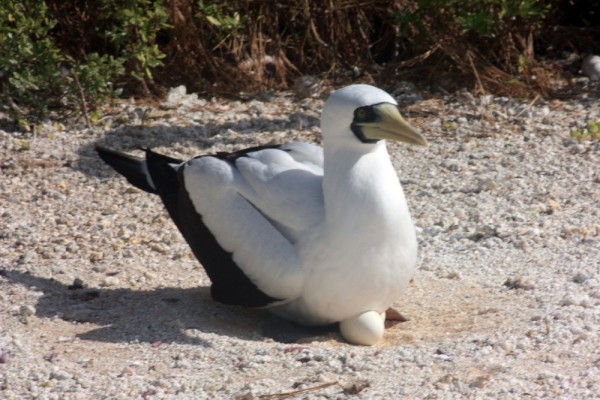
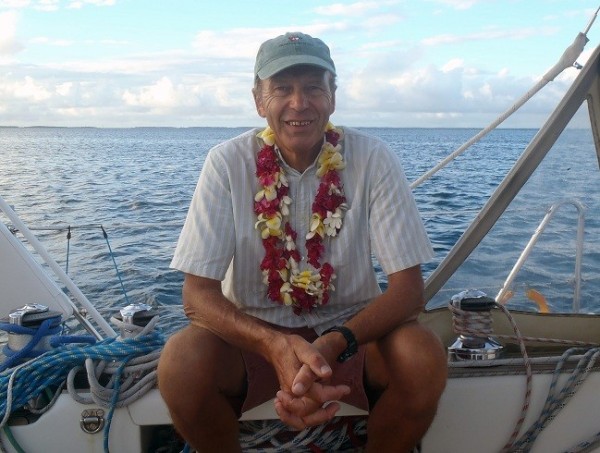
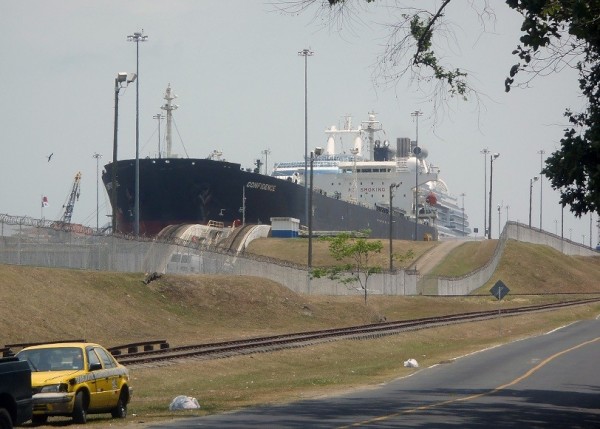
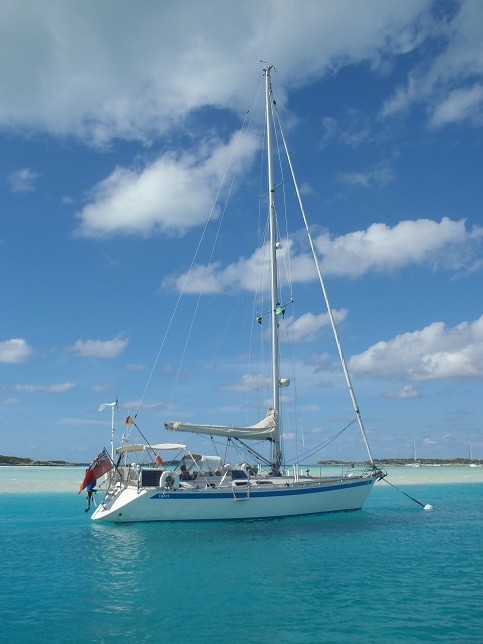
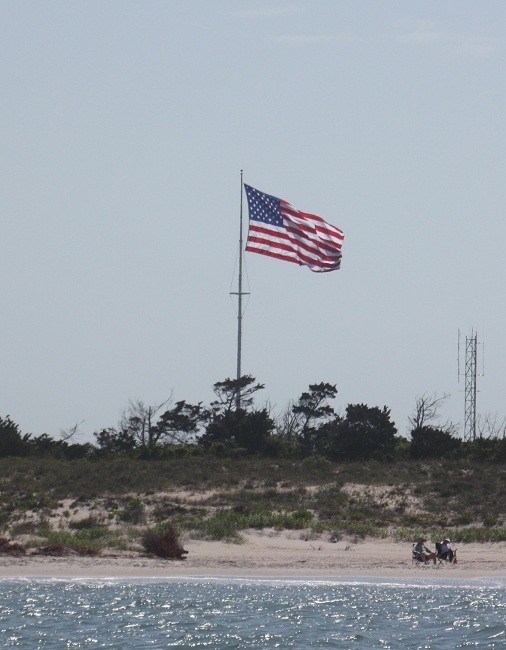
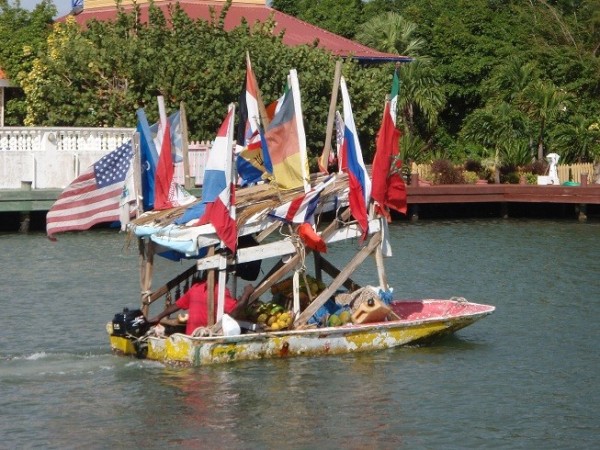

 f.jpg)
, Statue of Dewaruci at the Navy (Headline) a.jpg)



